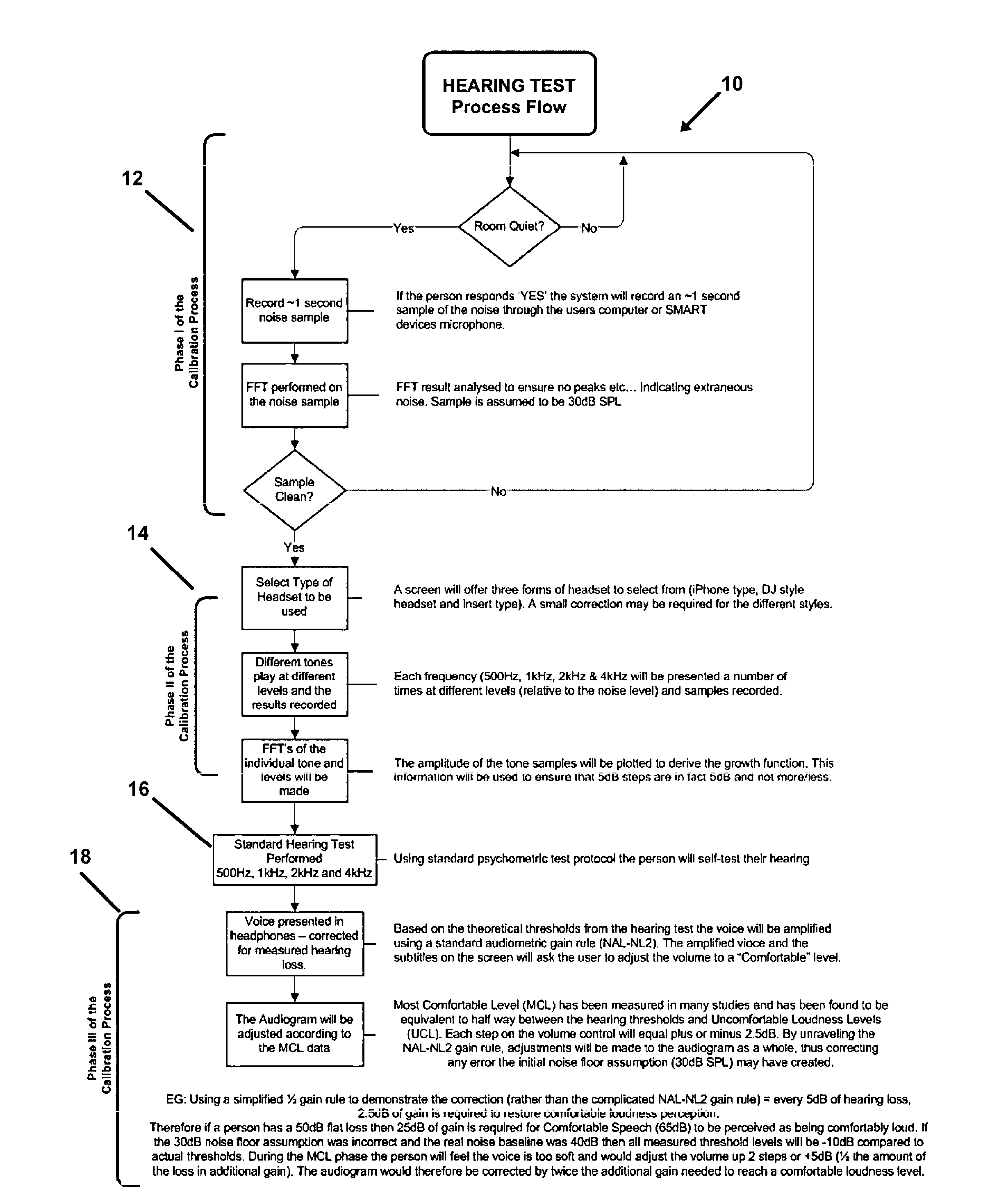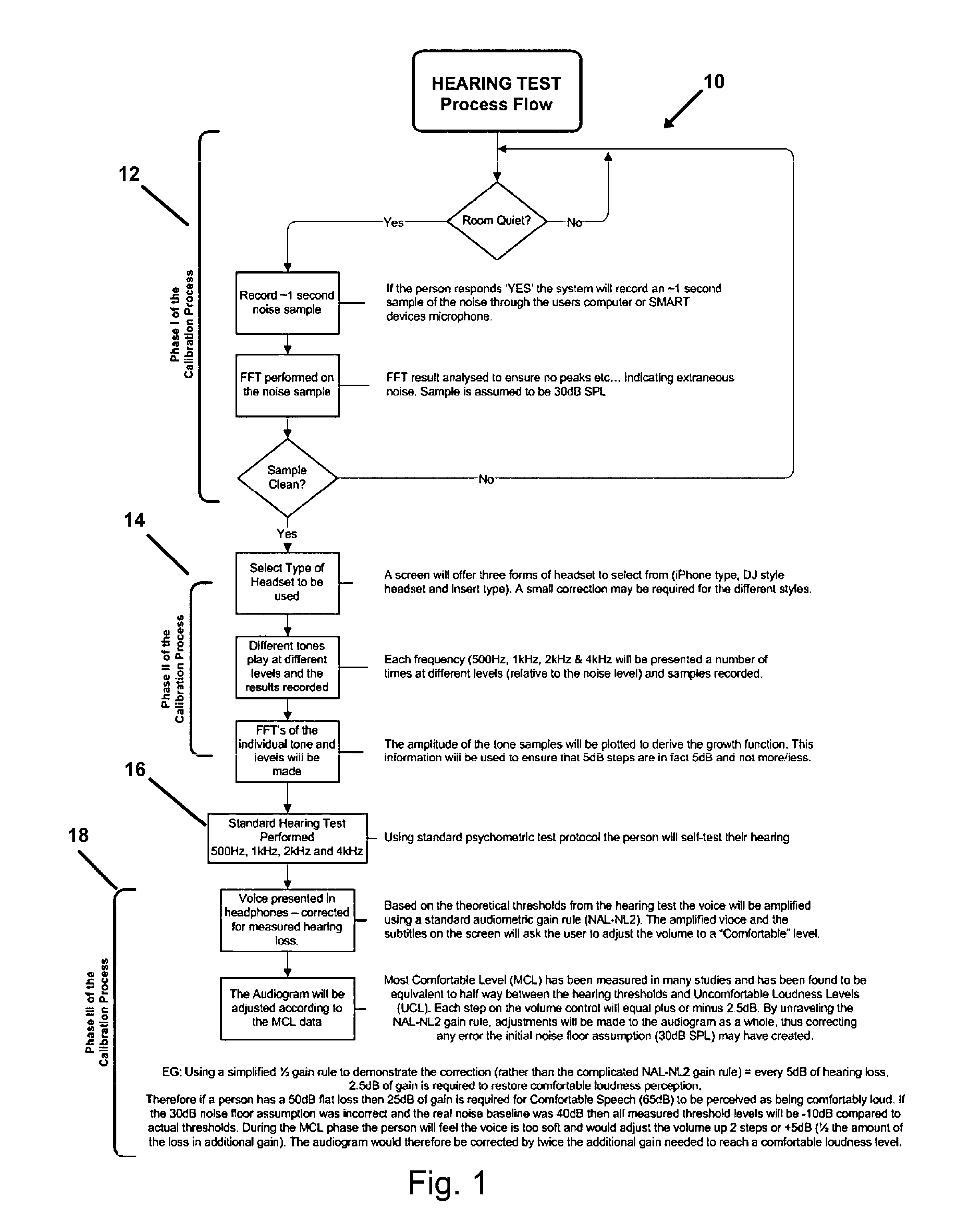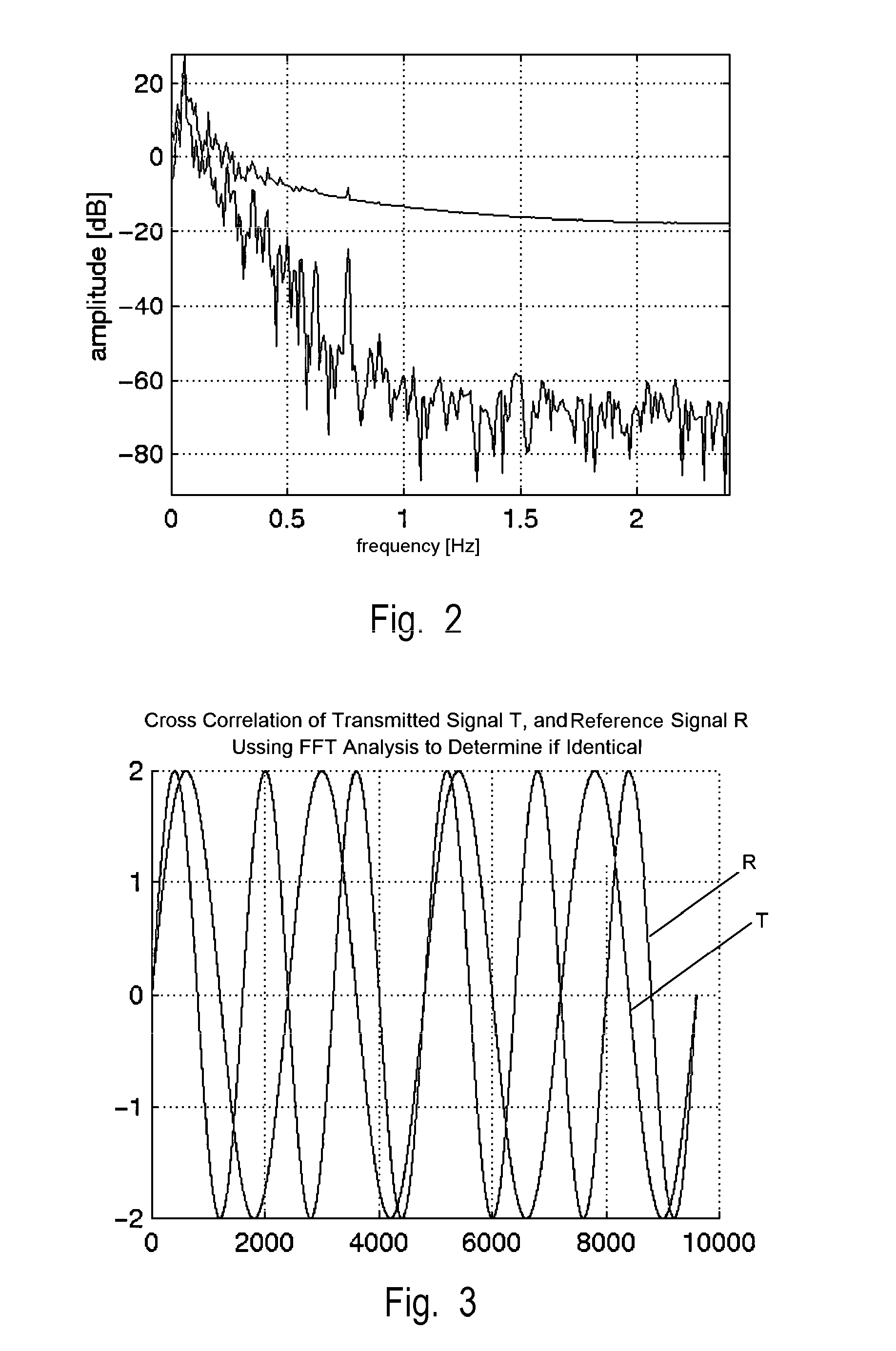System and method for hearing assessment over a network
a network and hearing assessment technology, applied in the field of system and method, can solve the problems of increasing the number of hearing problems in the general population, affecting the hearing of patients, and affecting the quality of life of patients, so as to achieve better understanding
- Summary
- Abstract
- Description
- Claims
- Application Information
AI Technical Summary
Benefits of technology
Problems solved by technology
Method used
Image
Examples
Embodiment Construction
[0078]Now referring to the drawings, in FIG. 1, there is shown a block diagram of the system herein generally providing figures and flowpaths representative of the disclosed system 10 for remote testing for hearing impairment.
[0079]The system 10 and method herein, in a first step 12 employs electronic means for determination of a maximum allowable db level of room noise in a calibration of the remote location and to ensure the sampled noise levels fit within system norms and a preferred assumption of 30 db threshold noise levels.
[0080]At the start of the test, text instructions are communicated from the server for display on the user's remote screen and / or voice instructions may be transmitted for play through the user's computer and will instruct the user to be quiet. The user or patient will be asked to send a signal using an input device such as a mouse or keyboard key, that they are quiet. Once the instruction is received and acknowledged by the patient, the software running the...
PUM
 Login to View More
Login to View More Abstract
Description
Claims
Application Information
 Login to View More
Login to View More - R&D
- Intellectual Property
- Life Sciences
- Materials
- Tech Scout
- Unparalleled Data Quality
- Higher Quality Content
- 60% Fewer Hallucinations
Browse by: Latest US Patents, China's latest patents, Technical Efficacy Thesaurus, Application Domain, Technology Topic, Popular Technical Reports.
© 2025 PatSnap. All rights reserved.Legal|Privacy policy|Modern Slavery Act Transparency Statement|Sitemap|About US| Contact US: help@patsnap.com



